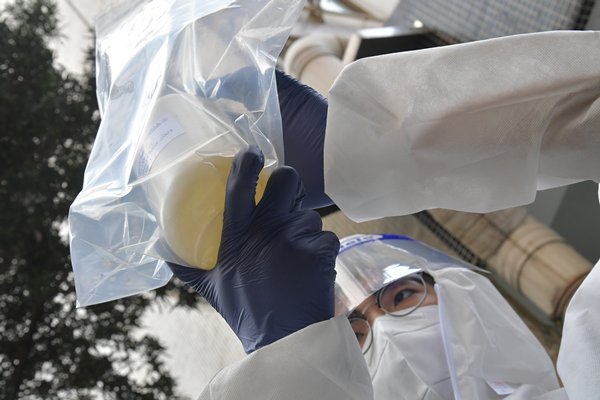Sewage Holds Virus Clues

In a win-win strategy aimed at fighting the virus, the Government has teamed up with a cross-disciplinary team of the University of Hong Kong on sewage surveillance since October last year.
It is the Environmental Protection Department’s job to identify high-risk areas that require sewage surveillance according to the trend of the coronavirus epidemic, analyse the sewerage networks and devise a sampling strategy.
The Drainage Services Department plays an equally important role. It selects sewage manholes, arranges the sampling by contractors and carries out cleaning and disinfection after the sampling is completed.
As people usually go to the toilet in the morning, samples are taken every 15 minutes, from 8am to 11am. A total of 12 samples are taken to ensure they are sufficiently random.
Drainage Services Department Assistant Director Ho Yiu-kwong said: “We try to avoid conducting sampling at locations on major roads or carriageways because it will involve considerable disruption to the general public.”
Mr Ho explained that when it comes to the manholes in private areas, the department has to solicit help from private parties as it may not have the comprehensive records it needs to carry out the testing process.
Hunting silent carriers
The wastewater samples are sent to a University of Hong Kong laboratory. After removing impurities, the samples undergo inactivation, pre-concentration by centrifugation, nucleic acid extraction, gene testing, and data analysis.
Hong Kong University Department of Civil Engineering Prof Zhang Tong, who leads the cross-disciplinary team that developed the technology, said positive signals help uncover hidden COVID-19 cases.
“Some patients are infected with the virus, but they do not have symptoms. Secondly, they may have symptoms, but for some reasons they do not want to see a doctor. So by sewage tests, we still can catch the positive signals from these patients.”
Prof Zhang emphasised that tracing the source of the signals enables them to provide suggestions for the Government to take follow-up action.
Wider coverage
The surveillance work expanded from 26 regular sewage sampling sites in the initial stage to housing estates and street blocks. The Government further increased the number of regular sewage sampling sites to 64 last month.
Environmental Protection Department Assistant Director Chen Che-kong lauded the technological achievement that helped his department to accumulate a lot of experience on how to effectively monitor a large population.
“We search for feasible manholes around Hong Kong to have the surveillance cover all 18 districts. After we finalise the list of sampling points, if we monitor them regularly - in a cycle - we can cover a population of about four million, which is more than half of the population in Hong Kong,” he said.
The Government has conducted compulsory testing operations on over 110 buildings with positive sewage testing results, including the compulsory testing in the Jordan restricted area in January and at Choi Wan (II) Estate last December. More than 50 confirmed cases have been identified as a result.
The innovative sewage surveillance project is funded by the Food & Health Bureau’s Health & Medical Research Fund and fully supported by the Environment Bureau.
The technology was recently hailed at the 2021 International Exhibition of Inventions of Geneva and the University of Hong Kong was honoured with a gold medal.
New Hub Helps Green Tech To Flourish
Last month, the Hong Kong Science & Technology Parks Corporation, or HKSTP, transformed its InnoCentre in Kowloon ... Read more
MICE Tourism Gains Momentum
Ballroom inspections and mahjong sessions may not be what automatically springs to mind when you consider Hong Kong’... Read more
Game Startups Reach New Level
The global video game industry is highly competitive, requiring effective marketing for success. The Hong Kong Game En... Read more
Breast Milk Donations Save Lives
Last April, Ida Chan welcomed her son into the world. He was born a kilogramme lighter than expected, and Ida decided ... Read more
HK Reaches For The Moon
The beauty and mystery of the Moon have captivated the human imagination for millennia. Channelling that fascination i... Read more
Creating Disability-inclusive Jobs
Nestled in the Museum of the War of Resistance & Coastal Defence, Madam Hong Cafe enjoys the spectacular views of ... Read more

